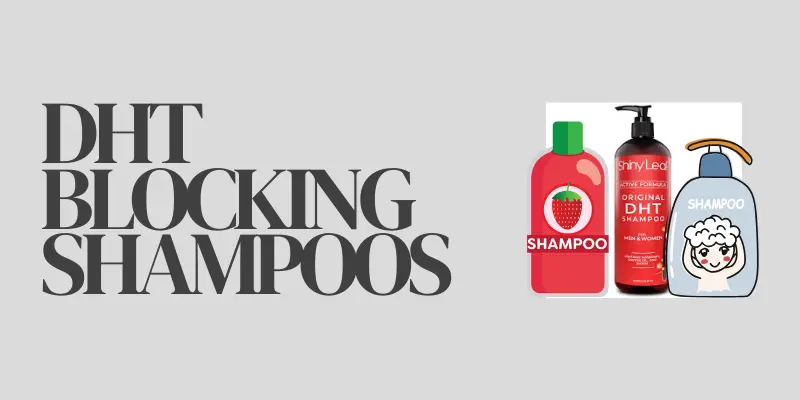Regrow Thinning Hair- Proven Ways Men Can Get Fuller Hair [Dermatologist-Approved]
Published: 27 Mar 2025
Watching your hair thin and not sure what to do? You’re not alone. Nearly 50% of men face this challenge by age 50, whether it’s due to genetics, stress, or diet. But here’s the encouraging part: science now offers real solutions to regrow thinning hair. From lifestyle changes to dermatologist-approved treatments, there are proven ways to regrow thinning hair quickly and safely. These methods work by reactivating dormant follicles, adding volume, and restoring your confidence so you can truly regrow thinning hair and feel like yourself again. Ready to take control? Let’s dive in.
1. FDA-Approved Hair Loss Treatments
FDA-approved hair loss treatments, such as minoxidil and finasteride, are clinically proven to slow hair thinning and promote hair regrowth. These options provide safe and effective solutions for managing hair loss under the guidance of a medical professional.
Minoxidil (Rogaine)
- How it works: Stimulates follicles, prolongs growth phase.
- Usage: Apply twice daily.
- Results: Visible in 3-6 months.
Finasteride (Propecia)
- How it works: It blocks DHT (balding hormone).
- Effectiveness: 90% success in clinical studies.
- Side note: Requires a doctor’s prescription.
Pro Tip:
Combine minoxidil + finasteride for 40% better results (Journal of Dermatology, 2021).
2. DHT-Blocking Shampoos
DHT-blocking shampoos are specially formulated to target dihydrotestosterone, a hormone linked to hair loss. By reducing DHT on the scalp, these shampoos help prevent follicle shrinkage and promote healthier hair growth.

They often contain ingredients like saw palmetto, ketoconazole, or caffeine. Regular use can support thinning hair and improve scalp health over time.
Key Ingredients to Look For
- Ketoconazole (1–2%): Reduces scalp inflammation (e.g., Nizoral).
- Saw Palmetto: Natural DHT blocker.
- Pumpkin Seed Oil: Strengthens hair follicles.
Best Pick:
Pura D’or Anti-Thinning Shampoo.
3. Nutrition for Hair Regrowth
Proper nutrition plays a vital role in hair regrowth by supplying essential vitamins and minerals like biotin, zinc, and iron. A balanced diet supports stronger follicles and encourages healthy, sustained hair growth.
Essential Nutrients
- Protein (Eggs, chicken): Builds keratin.
- Biotin (Nuts, salmon): Strengthens strands.
- Iron/Zinc (Spinach, oysters): Prevents shedding.
Avoid:
Sugar/processed foods (linked to hair fall).
4. Scalp Stimulation Techniques
Scalp stimulation techniques like gentle massage or microneedling boost blood circulation to hair follicles. This increased flow can enhance nutrient delivery, encouraging hair growth and overall scalp health.
Scalp Massage
- Why? Boosts blood flow by 27% (NIH study).
- How? 5 minutes daily with fingertips or a massager.
Microneedling
- Tool: 0.5mm-1.5mm derma roller.
- Frequency: Once weekly.
Pro Tip:
Apply rosemary oil post-rolling for 2x absorption.
5. Stress Management
Stress management is crucial for preventing hair loss, as chronic stress can disrupt the hair growth cycle. Techniques like meditation, exercise, and deep breathing help calm the nervous system.

Reducing stress supports hormonal balance, which plays a key role in hair health. Prioritizing mental well-being can significantly improve both scalp condition and hair strength.
Cortisol & Hair Loss
Chronic stress triggers telogen effluvium (excessive shedding). Fix it with:
- Meditation (10 mins/day).
- Exercise (yoga/weight training).
- Sleep (7-9 hours nightly).
6. Damaging Habits to Quit
Avoid damaging habits like excessive heat styling, tight hairstyles, and harsh chemical treatments that weaken hair over time. Quitting these practices helps preserve hair strength and prevent breakage.
What to Avoid
- Hot showers Strip scalp oils.
- Tight hairstyles cause traction alopecia.
- Smoking: Reduces follicle oxygen.
Fix:
Use lukewarm water + sulfate-free shampoos.
7. Low-Level Laser Therapy (LLLT)
Low-Level Laser Therapy (LLLT) uses red light to stimulate hair follicles and encourage regrowth. It’s a non-invasive, FDA-cleared option for treating thinning hair.
How It Works
- Devices: iRestore, Theradome (FDA-cleared).
- Results: 35% thicker hair in 6 months.
- Cost:
- 200-
- 200-600 (long-term investment).
8. Natural Remedies
Natural remedies offer gentle, holistic options for supporting hair growth and scalp health. As part of approved hair growth tips, ingredients like aloe vera, onion juice, rosemary oil, and green tea are known to nourish follicles and reduce inflammation.

These treatments are often rich in antioxidants, vitamins, and essential oils. Consistent use may improve hair texture, shine, and strength over time. While results vary, natural methods are safe alternatives to chemical-based products.
Rosemary Oil
- Study: Matches minoxidil’s efficacy (Skinmed Journal, 2015).
- How to Use: Mix with coconut oil; apply 2x/week.
Aloe Vera
- Benefits: Soothes scalp and reduces dandruff.
9. Underlying Health Checks
Underlying health checks are essential to identify medical issues like thyroid disorders or nutritional deficiencies, which are common causes of hair loss. Addressing these root causes can significantly improve hair regrowth outcomes.
Common Issues
- Thyroid disorders (Hypothyroidism).
- Vitamin D deficiency (Get sunlight!).
- Anemia (Eat iron-rich foods).
Action Step:
Request a blood test if shedding is sudden.
10. Hair Transplants (Last Resort)
Hair transplants are often considered a last resort for severe or permanent hair loss. This surgical procedure involves relocating healthy follicles to thinning areas for natural, long-term results.
FUE Transplant
- Process: Follicles moved from the back to the thinning areas.
- Recovery: 7-10 days.
- Cost:
- 4,000-
- 4,000-15,000.
FUT Transplant
- Pros: Cheaper.
- Cons: Linear scar.
Conclusion
Thinning hair doesn’t have to be permanent, and with the right approach, you can regrow thinning hair safely and effectively. Remember, consistency and expert-backed methods are key when you’re trying to regrow thinning hair and achieve visible results. Whether you explore dermatologist-approved treatments, adopt healthier habits, or embrace specialized products, you have real options to regrow thinning hair and bring back fuller, stronger strands. Your journey starts with understanding what works and staying committed to it.
FAQ Section
Most treatments (like minoxidil or diet changes) take 3-6 months to show visible results. Hair grows slowly-about ½ inch per month. Consistency is key!
If the follicles are completely dead (smooth, shiny scalp), regrowth is unlikely. But if you still see fine hairs, minoxidil and micro needling can revive them.
Finasteride is safe for most men, but 2 3% report side effects like low libido. These usually fade after stopping. Always consult a doctor first.
Minoxidil works faster (proven by 40+ years of studies), but rosemary oil is natural and helps if used daily for 6+ months. Try both for the best results!
Yes! FDA-approved laser caps, like iRestore, help 85% of users see more hair growth. Use them 3 times a week for at least 4 months to notice changes.
No, daily washing doesn’t cause hair loss. Just use a gentle, sulfate-free shampoo. Washing 2–3 times a week is usually best to avoid drying your scalp.
Stress usually causes temporary shedding called telogen effluvium. Once you manage stress, hair often grows back within about 6 months.
Yes, for advanced baldness, they can be life-changing. FUE transplants look natural, last a lifetime, and usually start from around $4,000.
Quitting too early! Many stop treatments before 3 months, right when results start to show. Staying consistent is the key to success.
Yes! Scalp massages + a protein-rich diet + stress control can help, but results are slower. Combine with treatments for the best outcomes.

- Be Respectful
- Stay Relevant
- Stay Positive
- True Feedback
- Encourage Discussion
- Avoid Spamming
- No Fake News
- Don't Copy-Paste
- No Personal Attacks

- Be Respectful
- Stay Relevant
- Stay Positive
- True Feedback
- Encourage Discussion
- Avoid Spamming
- No Fake News
- Don't Copy-Paste
- No Personal Attacks





